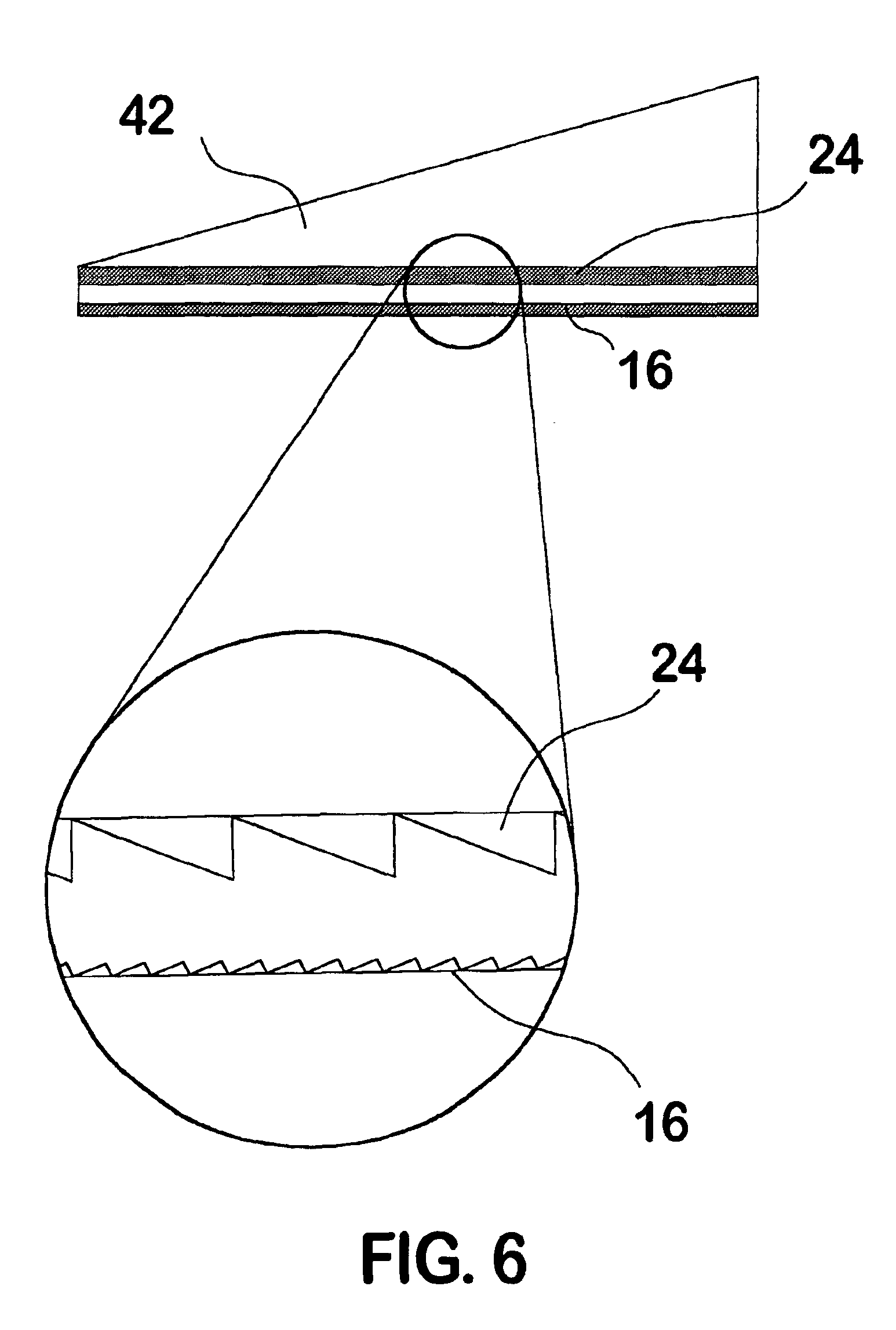Thinner, lighter and lower aberration prisms for ophthalmic applications
a technology of aberration prisms and aberration lenses, applied in the direction of instruments, mountings, spectacles/goggles, etc., can solve the problem of impracticality of thick prisms for spectacle use, and achieve the effect of improving optical performance and reducing the thickness of composite prisms
- Summary
- Abstract
- Description
- Claims
- Application Information
AI Technical Summary
Benefits of technology
Problems solved by technology
Method used
Image
Examples
example 1
[0036]A composite prism of 23 p.d. was made and tested. This prism was similar to the prism shown in FIG. 1. The high index refractive prism component of the composite prism was made using the glass SFL-6 with a refractive index of 1.8 and Abbe number of 26. This glass was manufactured by the Ohara company. A refractive SFL-6 prism with a prism angle of 14 degrees produced about 21 p.d. prismatic power. A low blaze angle blazed grating with a blaze angle of 2.3 degree and a groove density of 35 grooves / mm produced additional prismatic power of about 2 p.d., thus making the total prism power of the refractive and diffractive components slightly over 23 p.d. It is important to note that a standard ophthalmic acrylic prism of similar thickness would have produced only 13 p.d. prismatic power. The diffractive structure was replicated from a grating master using thermally cured epoxy on a 1.5 mm thick, transparent BK-7 glass substrate, and was similar to that shown in FIG. 3. The grating...
example 2
[0038]Instead of replicating the diffractive structure on a separate transparent substrate as was the case in example 1, the diffractive structure in this example was directly replicated onto the high index refractive prism. This method avoids the use of a separate substrate, thus reducing the thickness of the composite prism to the least possible. Additional reflections arising from the use of another surface are also eliminated. For this example, a high index prism with a prism angle of 15 degrees was made using High-Lite glass. This glass has a refractive index of 1.7 and is manufactured by the Schott company. A blazed grating with a blaze angle of 2.3 degree, a groove density of 35 grooves / mm and with its highest efficiency at a wavelength of 570 nm, was then replicated on the base face of the high index refractive prism as shown in FIG. 4. The orientation of diffractive structure grooves is shown in FIG. 5. The total prismatic power of the composite prism was about 22 p.d. An o...
PUM
 Login to View More
Login to View More Abstract
Description
Claims
Application Information
 Login to View More
Login to View More - R&D
- Intellectual Property
- Life Sciences
- Materials
- Tech Scout
- Unparalleled Data Quality
- Higher Quality Content
- 60% Fewer Hallucinations
Browse by: Latest US Patents, China's latest patents, Technical Efficacy Thesaurus, Application Domain, Technology Topic, Popular Technical Reports.
© 2025 PatSnap. All rights reserved.Legal|Privacy policy|Modern Slavery Act Transparency Statement|Sitemap|About US| Contact US: help@patsnap.com



